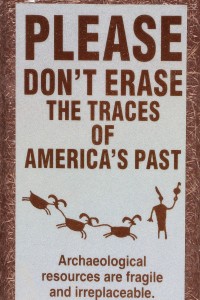 Double Stack Ruins: 1.5 miles, easy
Double Stack Ruins: 1.5 miles, easy
Cold Springs Cave/Ruins: 2.25 miles, easy
Big Bob Crane Pictograph: 2.0 miles, easy
All: out and back with no official trail, best season spring and fall. Watch out for poison ivy in the side canyons.
These hikes are in a fragile desert environment and visit sacred cultural sites. Please stay on trails and avoid disturbing the cryptobiotic soil. Please do not touch the ruins and leave all artifacts as you found them.
After finishing our Salt Creek backpack (read post), we were ready for a comfortable bed and shower. We had reservations for Desert Rose Inn (Bluff, UT) and were delighted to find we’d been upgraded to their brand new building complete with private balcony and indoor pool. The building and rooms were beautifully decorated. In the morning we tried the hotel’s new restaurant Duke’s. We had their breakfast burrito with egg, cheese, veggies, and avocado wrapped in thin delicious tortillas with a side of sausage that appeared locally made. Yum!
After breakfast, we made the short drive southwest to Butler Wash Road. Our plan for the day was to make several short hikes to ruin/rock art sites along Comb Ridge, a spectacular 80 mile long monocline rich with cultural sites dating back to mid-1200 and older.
From the highway we drove north several miles to the trailhead for Double Stack Ruins. Like the other hikes we would do this day, we had the trail all to ourselves.
We dropped down into Butler Wash and wandered around in the thick brush a bit before popping out the other side. The guide I had said to follow the “most well used hiker trail”—that was easier said than done with trails shooting off in all directions. We hiked out over the flat a distance and then dropped down into a canyon.
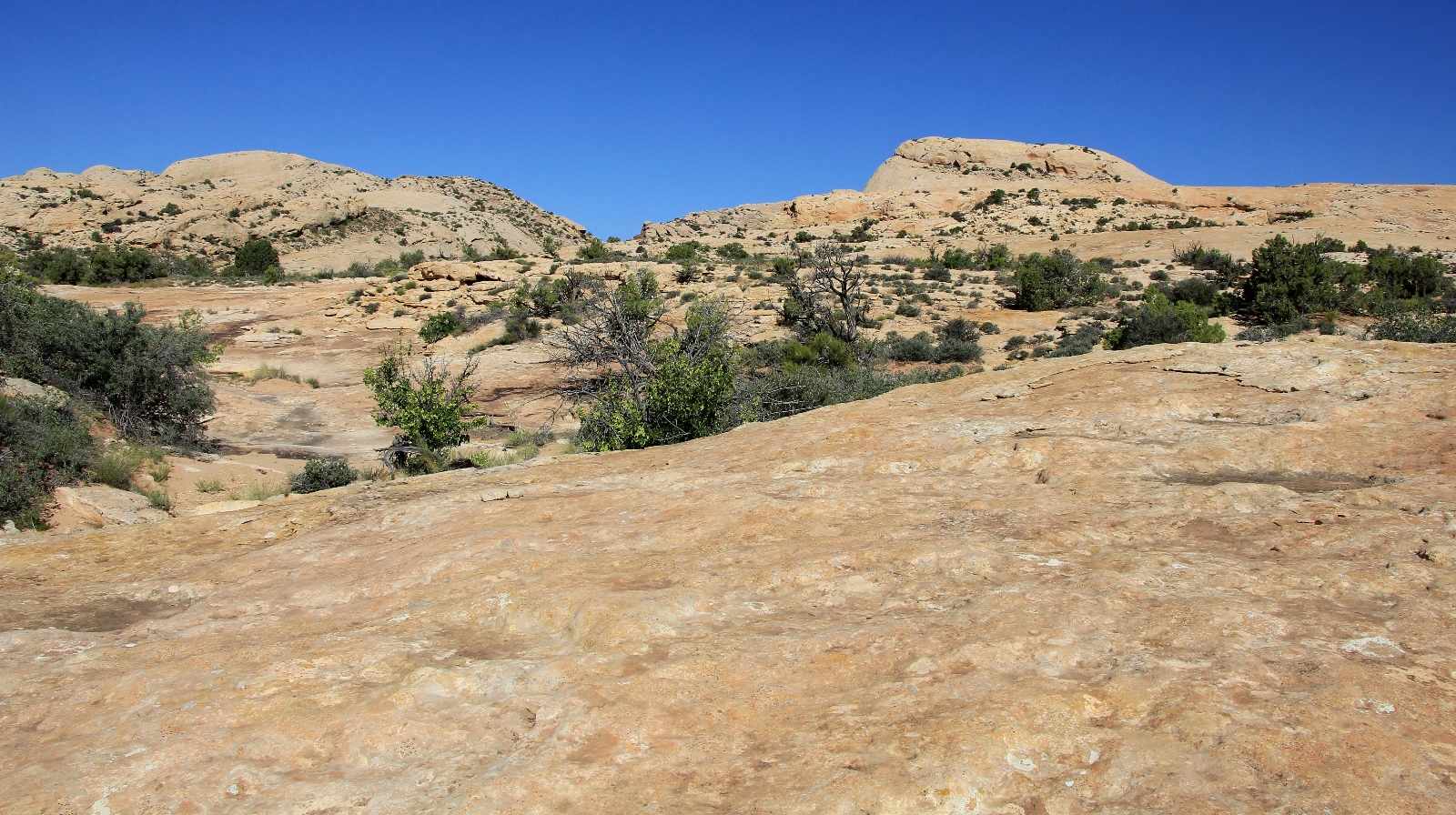
We passed by the remains of a log sweat house.
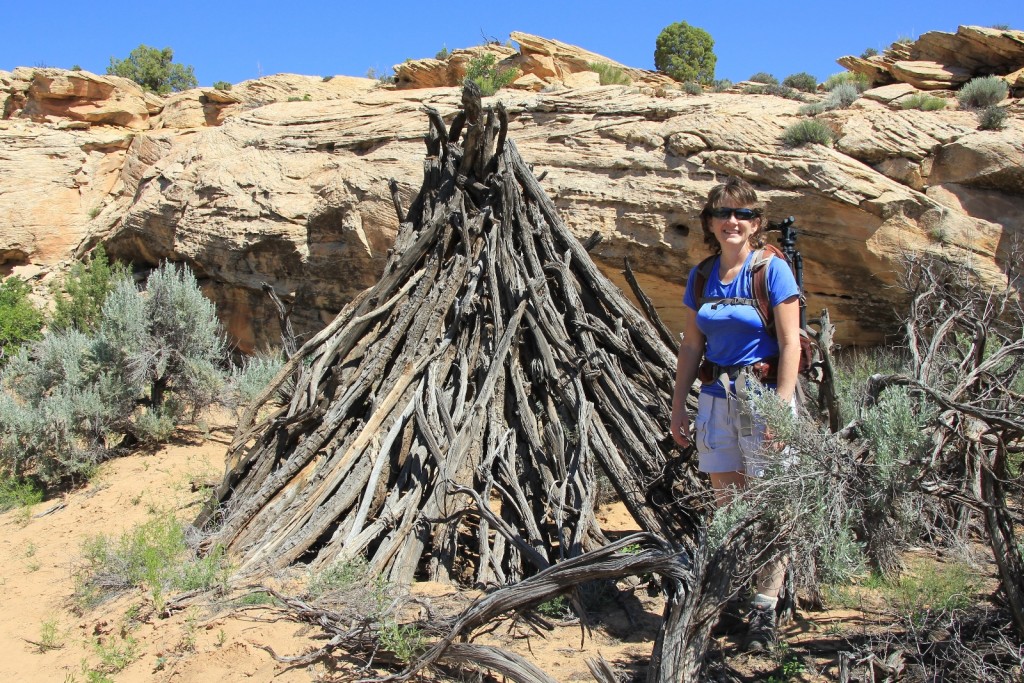
We found Double Stack, a moderate size complex, tucked back up in a typical Comb Ridge side canyon. There were several structures, hand pictographs, corn cobs, mano and metate. The site is not in particularly good condition, but I found it an enjoyable hike and destination.
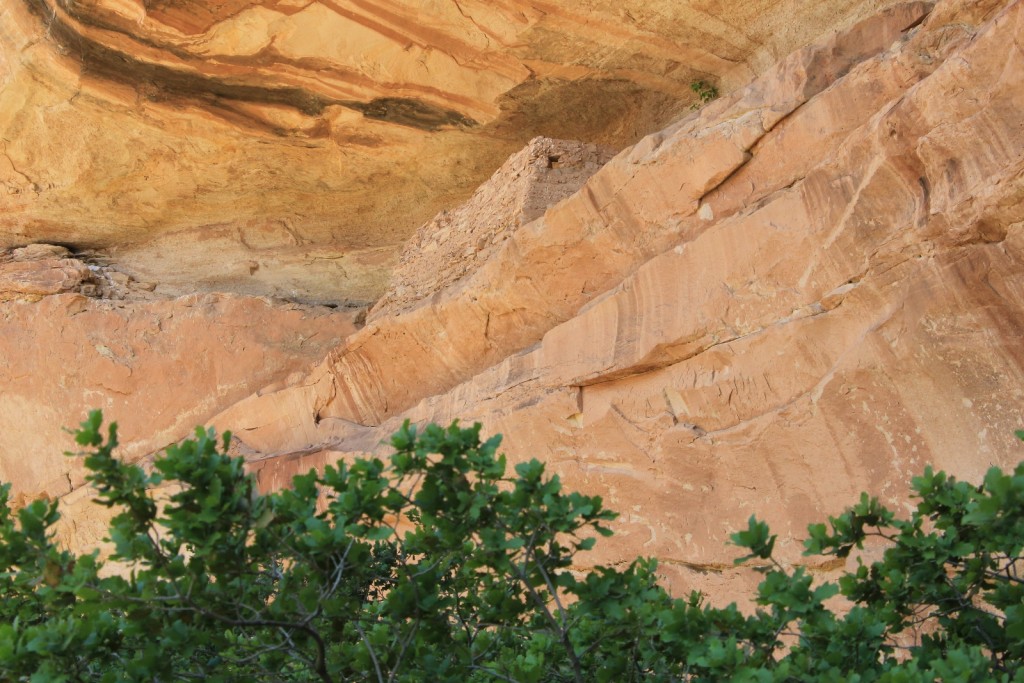
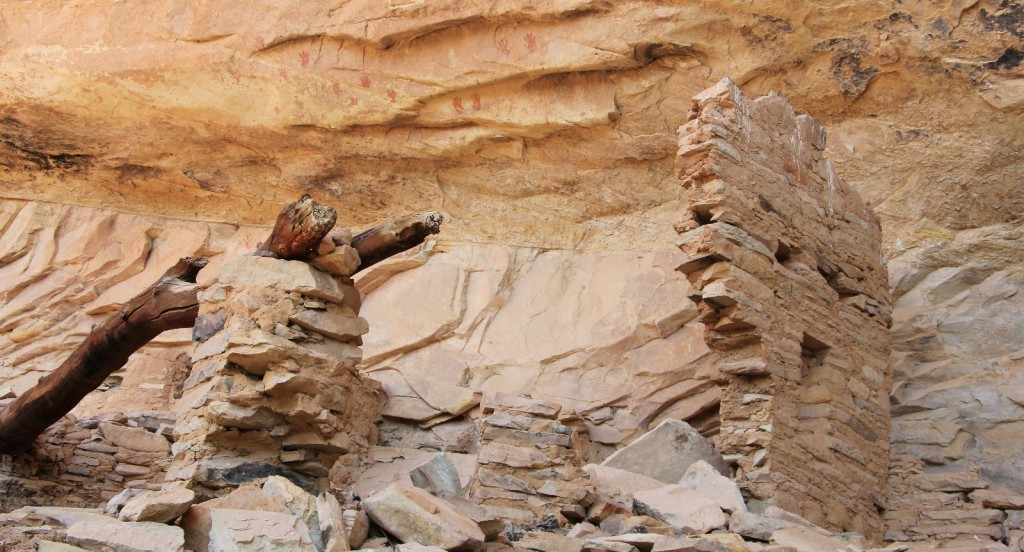
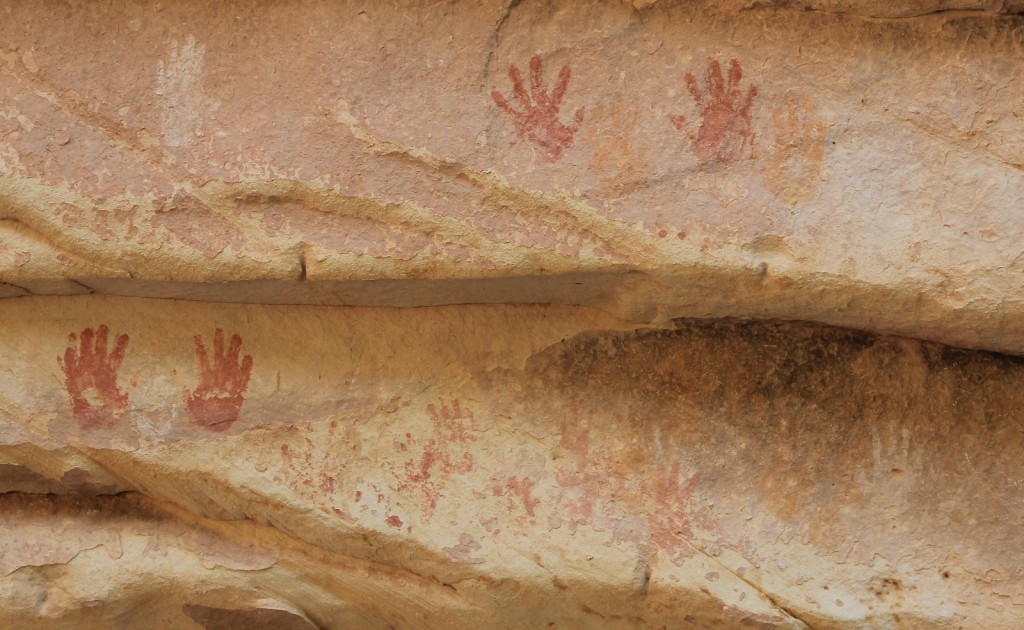
Back in the truck, we continued north a few miles to the Cold Spring Cave trailhead. We followed a well-worn hiker trail west about a quarter of a mile before dropping down into Butler Wash.
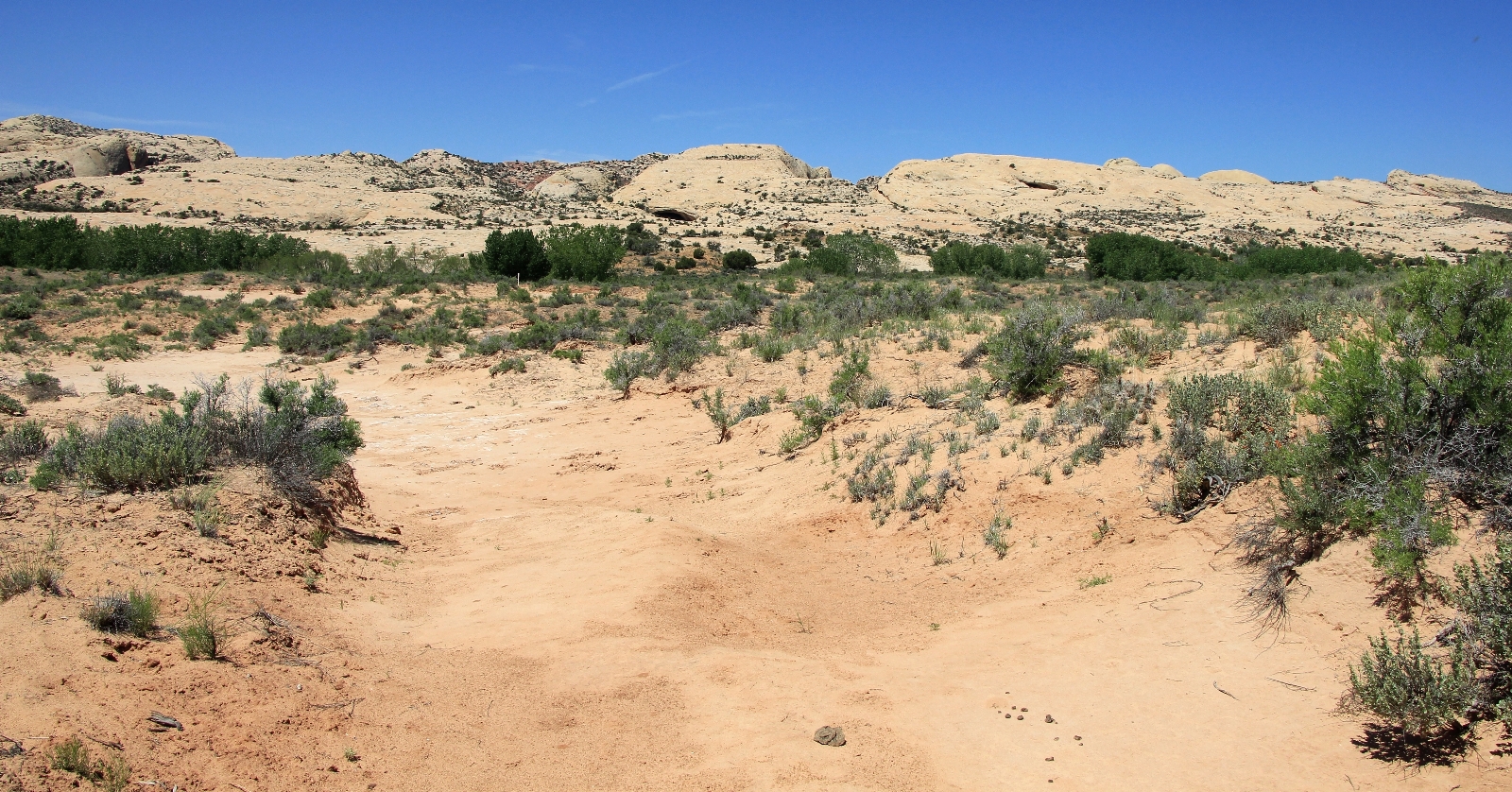
Like the hike to Double Stack, we had to bushwhack our way through the wash and had a bit of a time before emerging out the other side and finding our way onto the best trail. Once down in the entrance to the canyon, the hiker made trail became well defined.
We found the Cold Springs Cave Ruins in a lovely little canyon with a slickrock bottom. Exploration of the relatively large site was easy. We enjoyed seeing the many good structures, hand pictographs, mano, metate, and Cold Springs Cave itself.
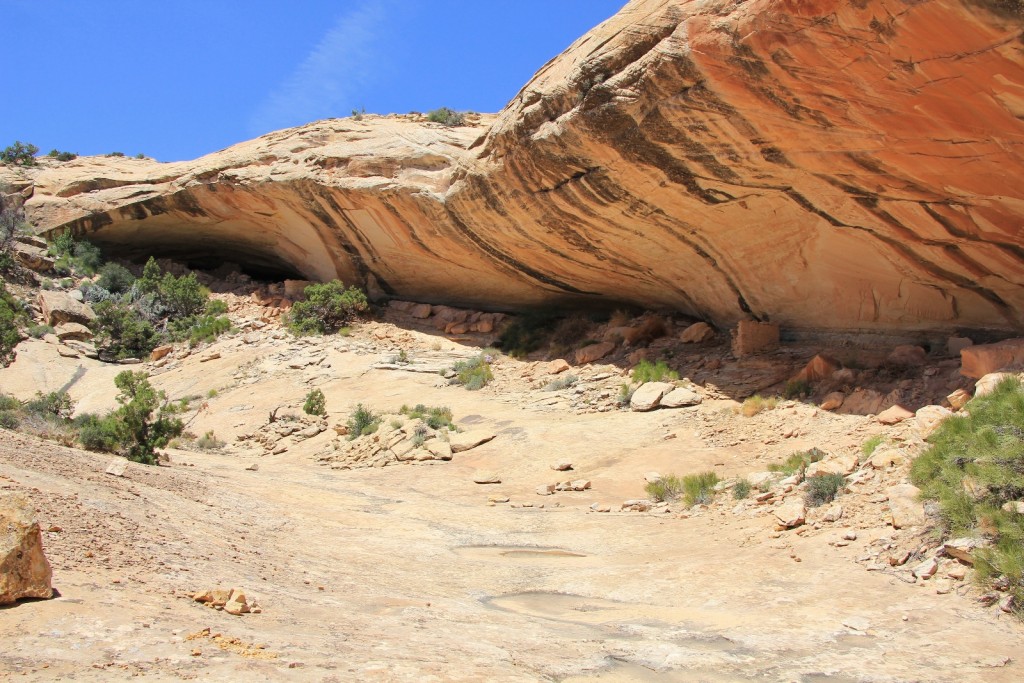
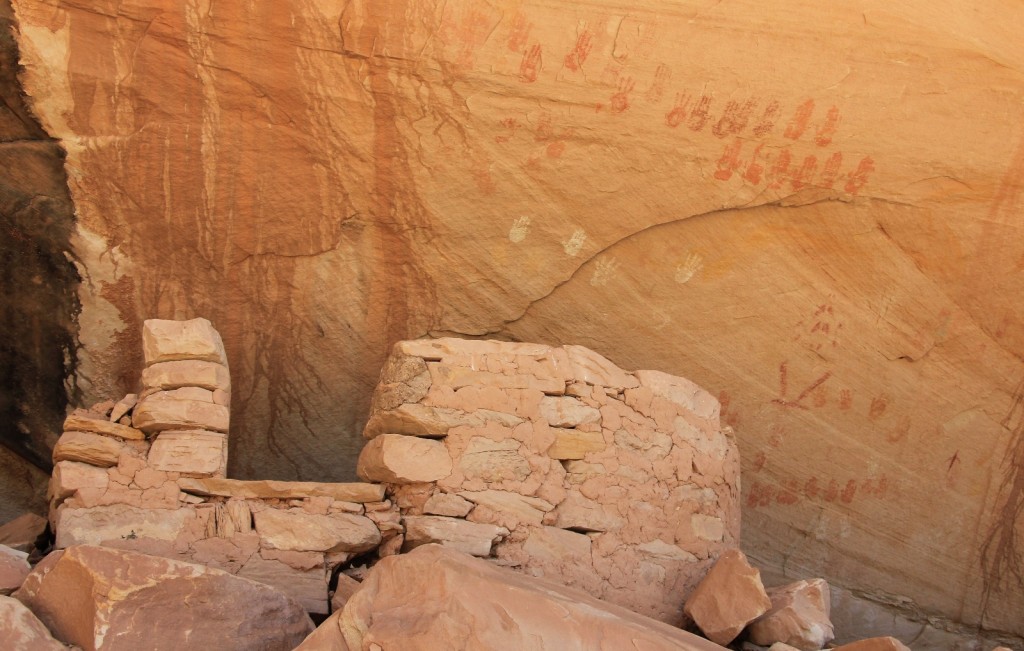
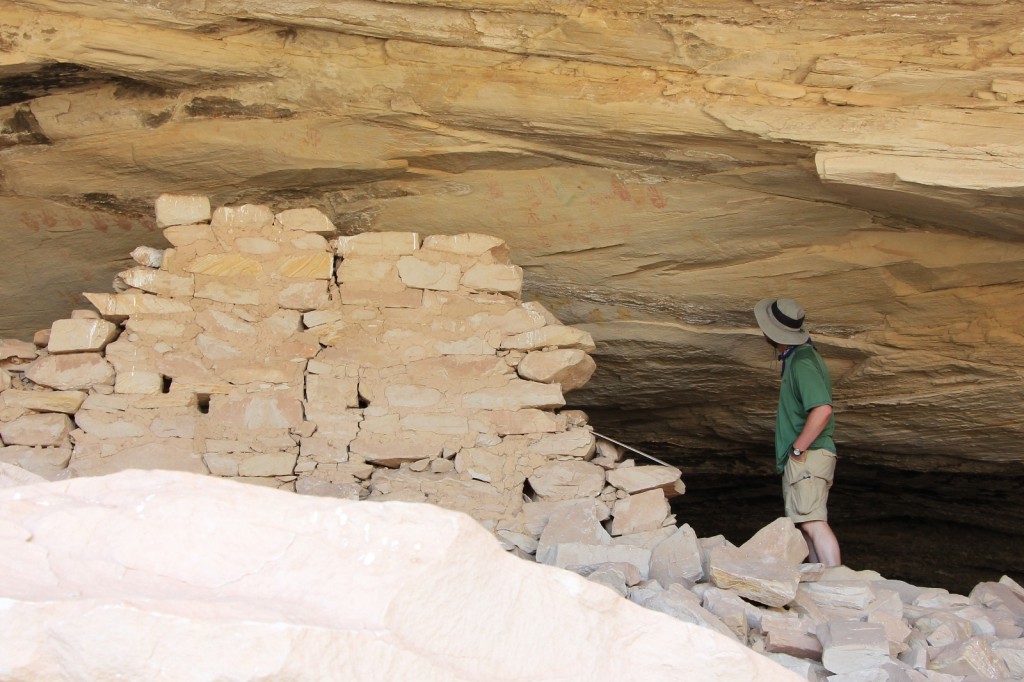
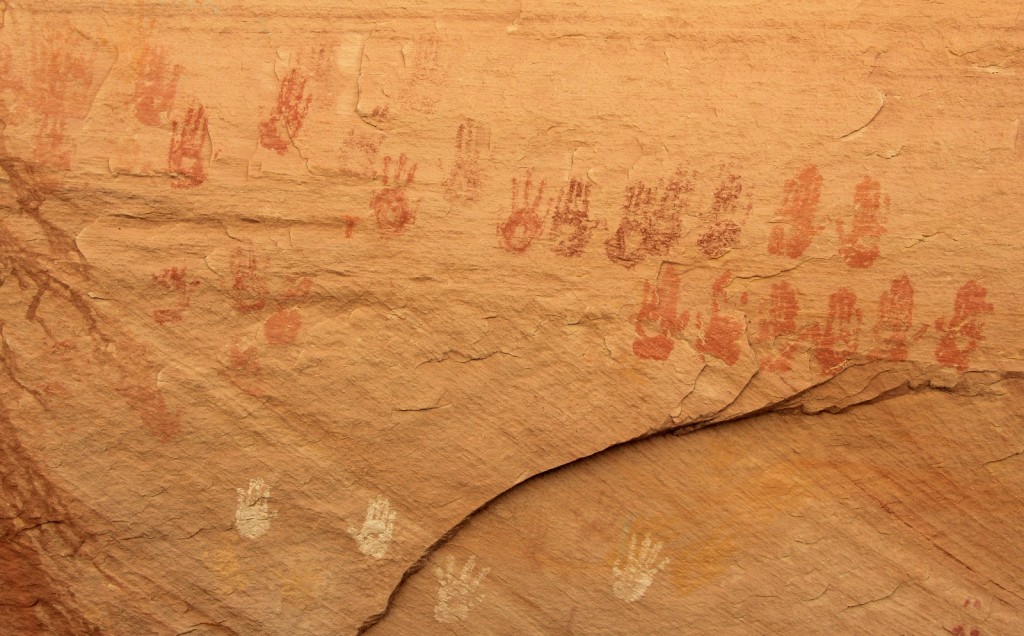
Cold Spring Cave was discovered by the 1892 Illustrated America Exploring Expedition. Here is what they had to say about the area:
“In the immense sandstone spur outcropping between Butler’s Wash and Comb Wash, we noticed a large cave in one of the deep canyons in the ledge, and, examining it with our field glasses we thought we could distinguish ruins near the opening. Four of us started to investigate and found it a cavern of great dimensions, with the whole floor under the overhanging ledge studded with ruins. The canyon in which this picturesque cave town is situated is wild and beautiful, shut in on all sides by high sandstone cliffs, and having only one narrow entrance. The foliage is almost tropical in its luxuriousness. We found cactus plants of gigantic size, and grass and flowering plants over a foot in heights, while the bare rocky ledges were studded with cedars, cottonwood and pinions. We have named the place Cold Spring Cave on account of the fine spring of cold, clear water away in the back interior of the cave. It flows out from under the heavy sandstone ledge into a round, clear pool, and, after passing through a short outlet, sinks into the ground and disappears, not have a dozen feet from where it started.”
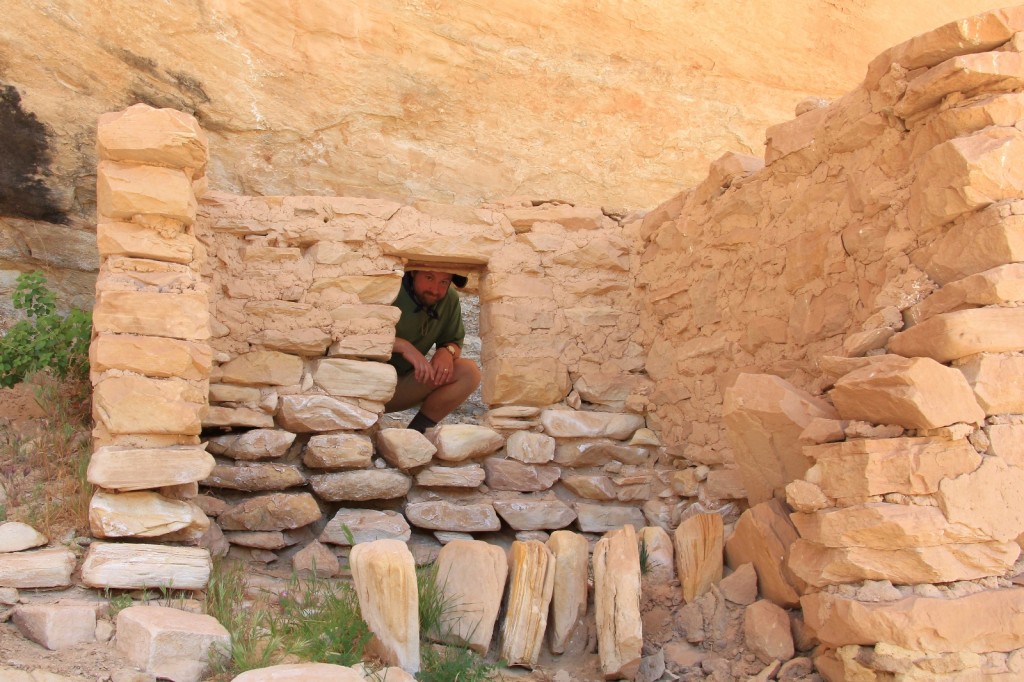
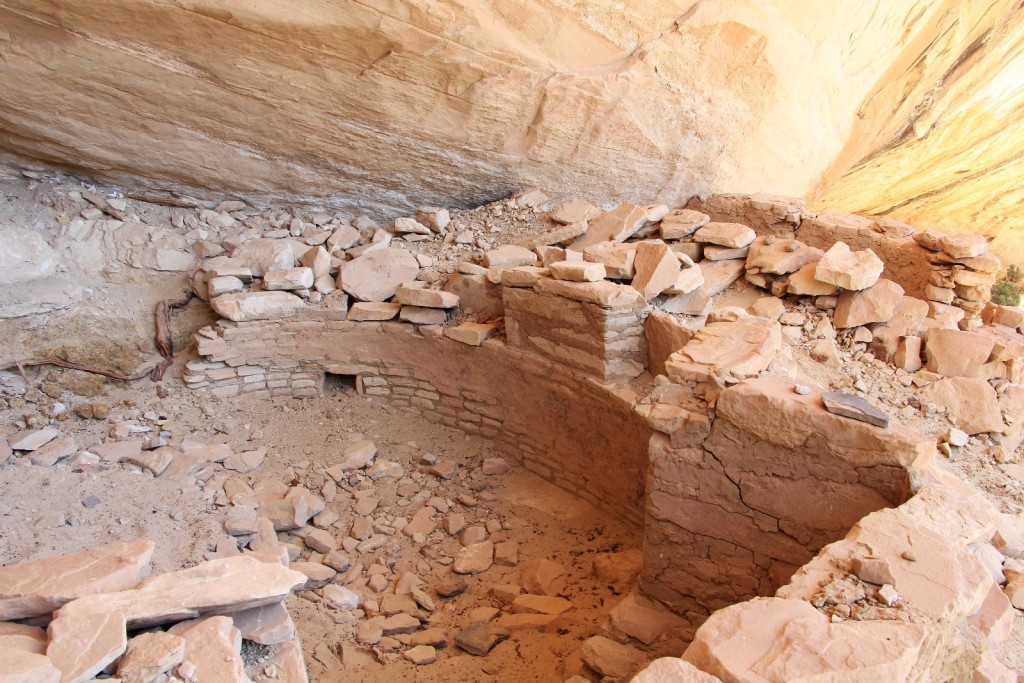
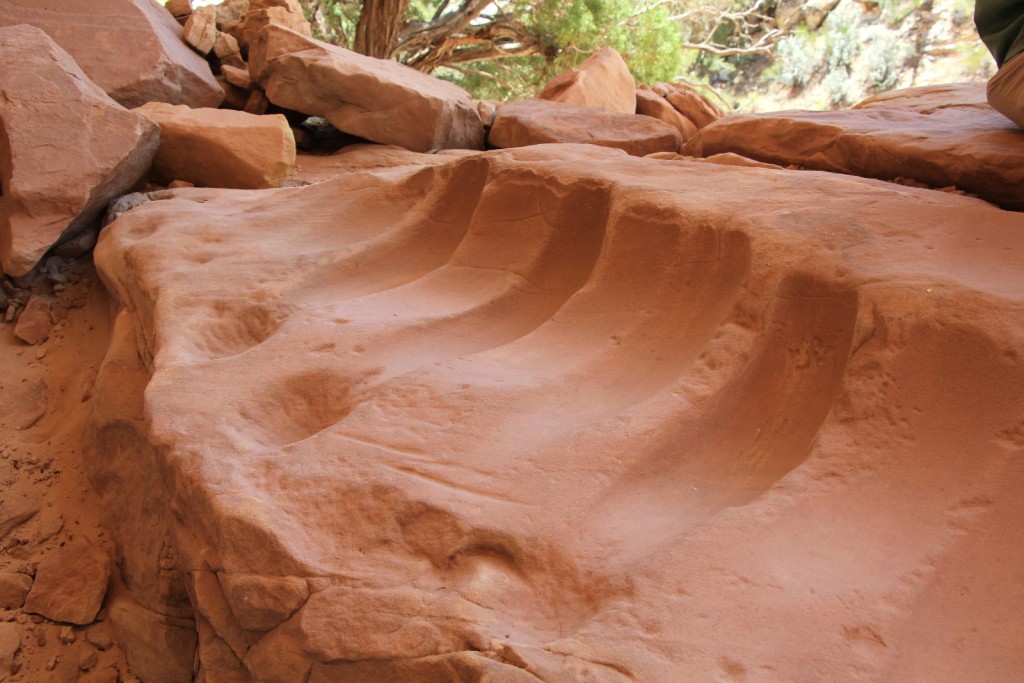
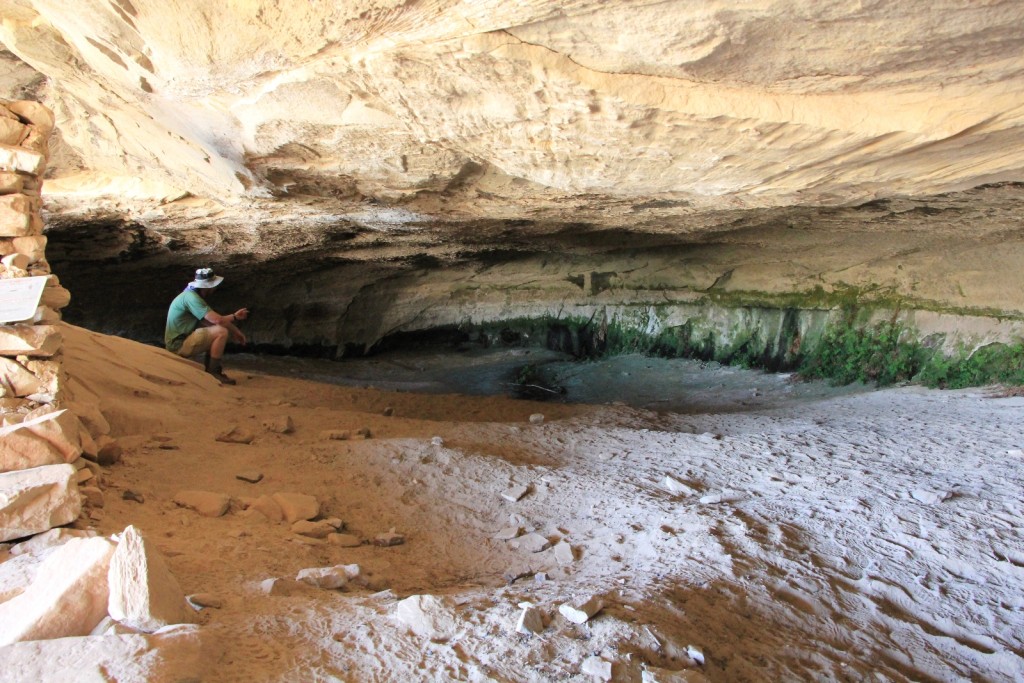
The return hike back was sunny and warm. We saw several large lizards and beautiful cacti in bloom. We were about half way back to the truck when something caught our eye. It was a bright green lizard moving faster than any we had ever seen. He almost glided over the desert floor. He was moving so fast I didn’t think I’d get a shot of him. But then he stopped… and turned to face me. He was magnificent—the most beautiful lizard we had ever seen.
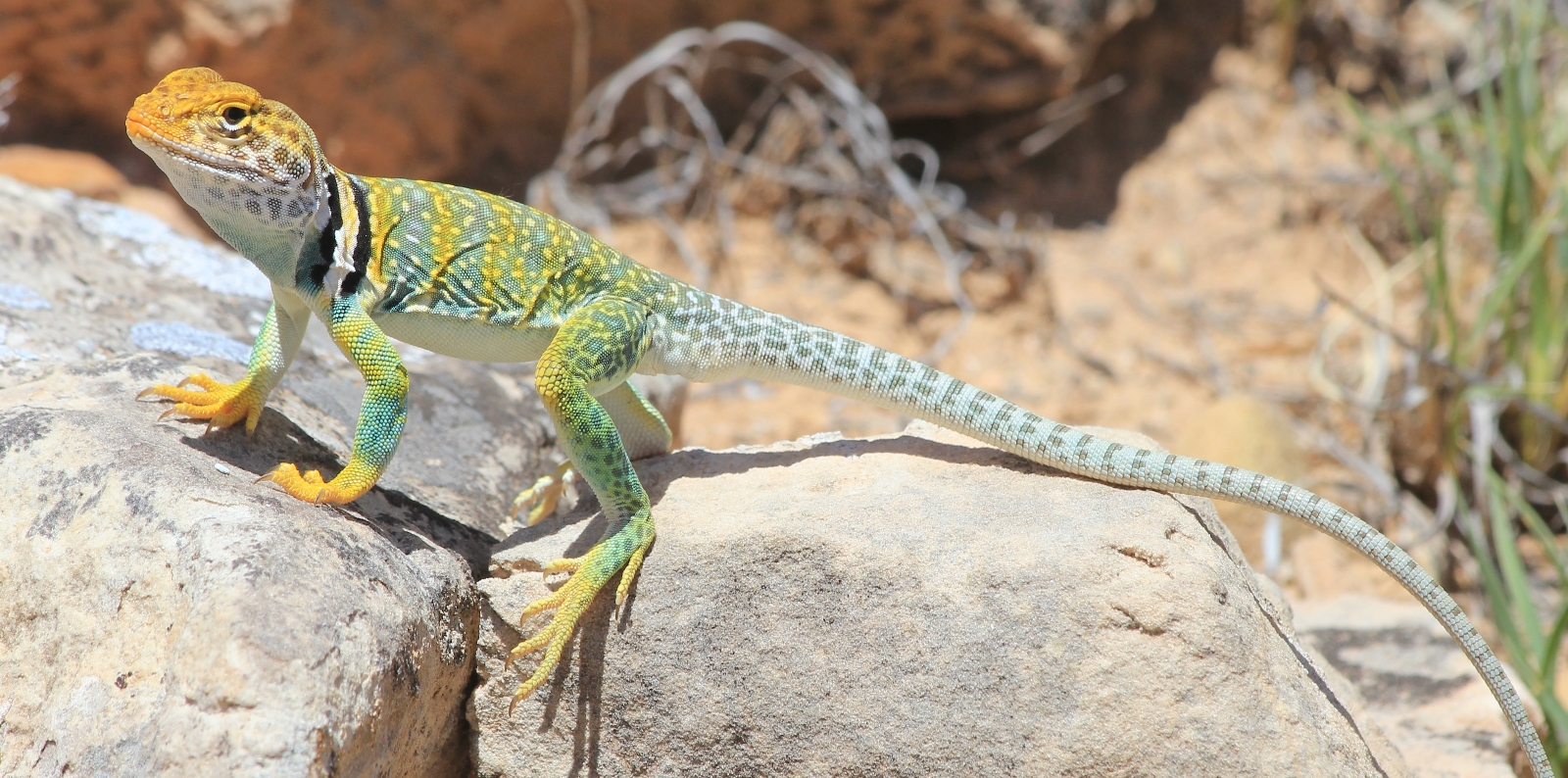
A lesser known site that we visited was the Big Crane petroglyph panel (affectionately known to some as “Big Bob”). This life size glyph looks over a beautiful side canyon of Comb Ridge. I owed a big thanks to a Flickr/Facebook contact for providing me instructions to this special site.
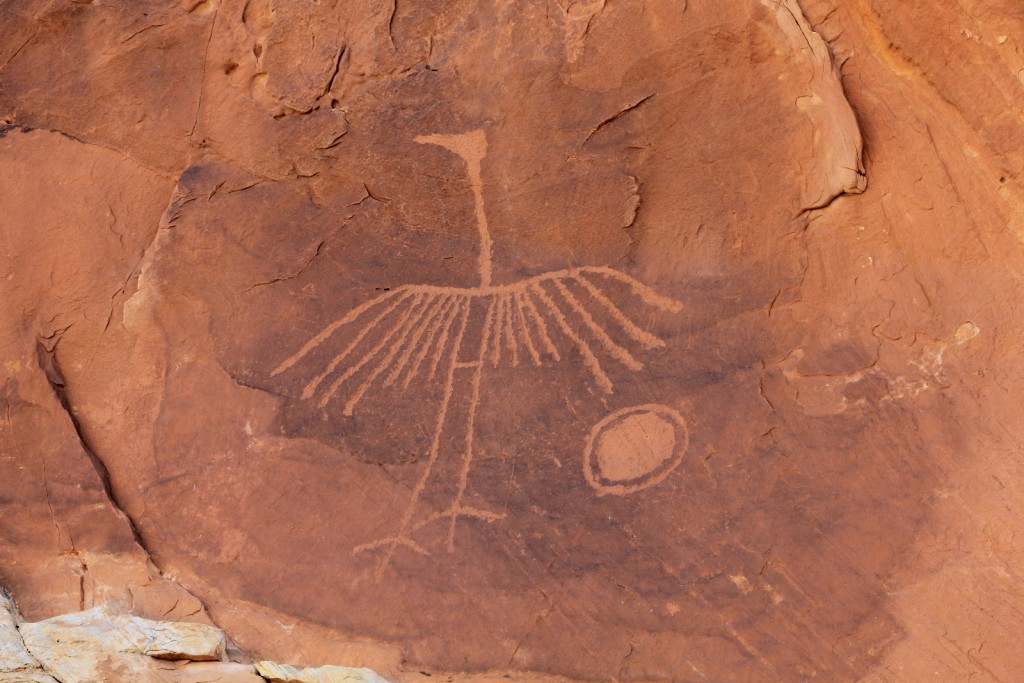
Back in Bluff, we ended the day with some down time around the Desert Rose Inn pool. Then it was time for dinner at one of our vacation favorites, Cottonwood Steak House. This place NEVER disappoints. We took a seat outside and enjoyed a perfect evening under the big old cottonwood. As always, the food and service were fantastic. I had the beef brisket while Jason had the rib and chicken combo. 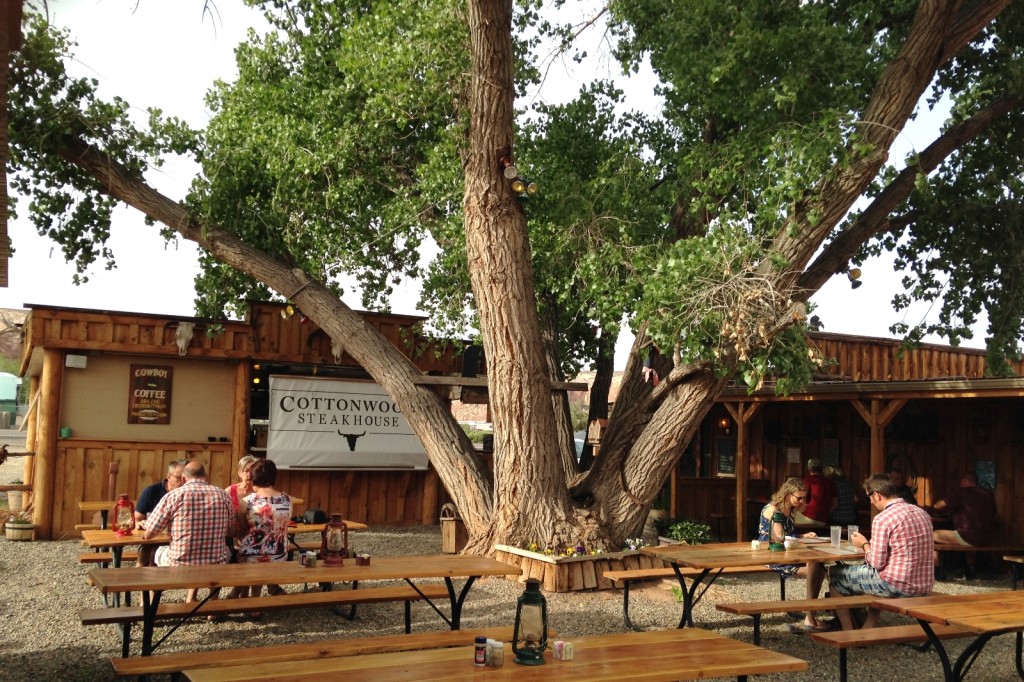
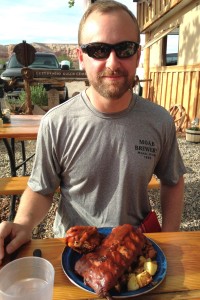
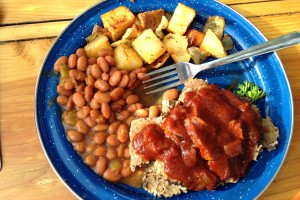 Directions to Comb Ridge from Bluff: travel west on US-191 for 4 miles to the junction of US-191/163. Travel west on US-163 for 0.9 miles to the well-marked San Juan County Road 262 (Butler Wash Rd) on the north side of the highway. This road is gated— please leave the gate as you found it (we have always seen it closed). Butler Wash Road parallels Comb Ridge. The land in between is BLM and open to explorations of the area’s rich cultural history. Butler Wash Road was in good condition during our visit. I believe a passenger car might have trouble, but any stock S
Directions to Comb Ridge from Bluff: travel west on US-191 for 4 miles to the junction of US-191/163. Travel west on US-163 for 0.9 miles to the well-marked San Juan County Road 262 (Butler Wash Rd) on the north side of the highway. This road is gated— please leave the gate as you found it (we have always seen it closed). Butler Wash Road parallels Comb Ridge. The land in between is BLM and open to explorations of the area’s rich cultural history. Butler Wash Road was in good condition during our visit. I believe a passenger car might have trouble, but any stock S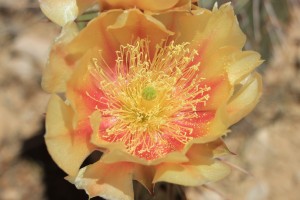 UV or truck would have no problems.
UV or truck would have no problems.